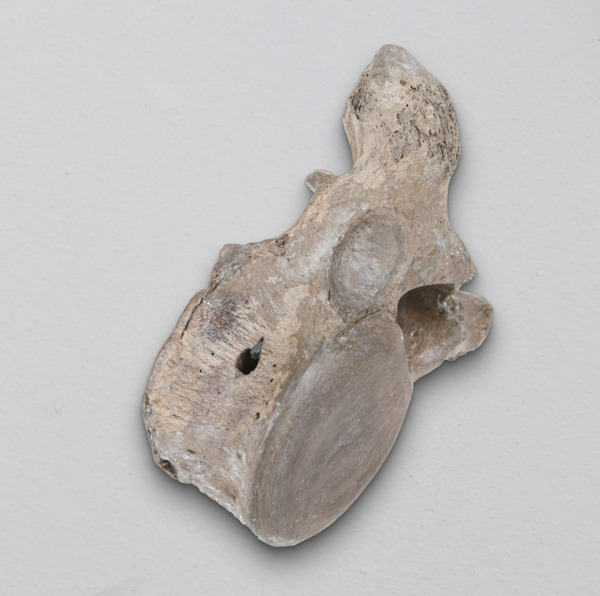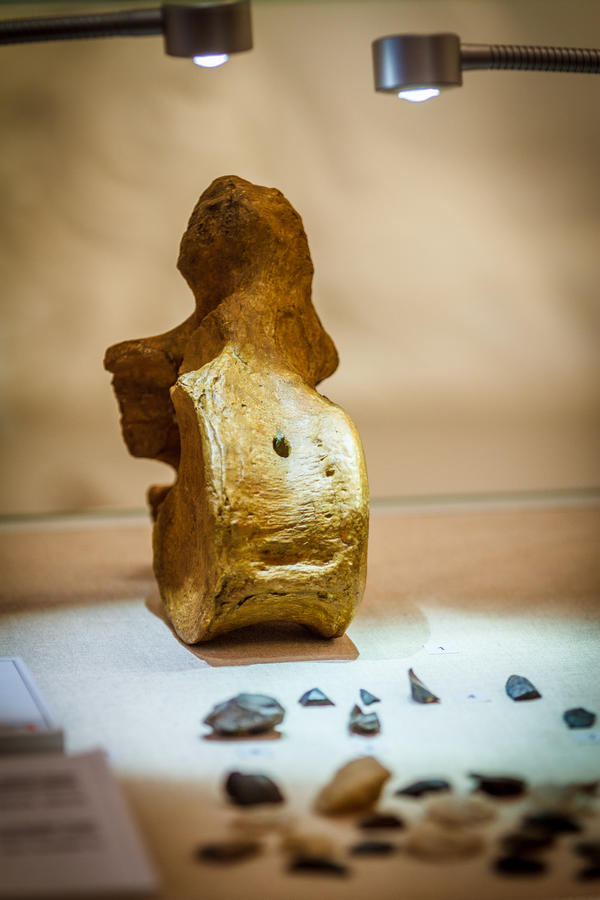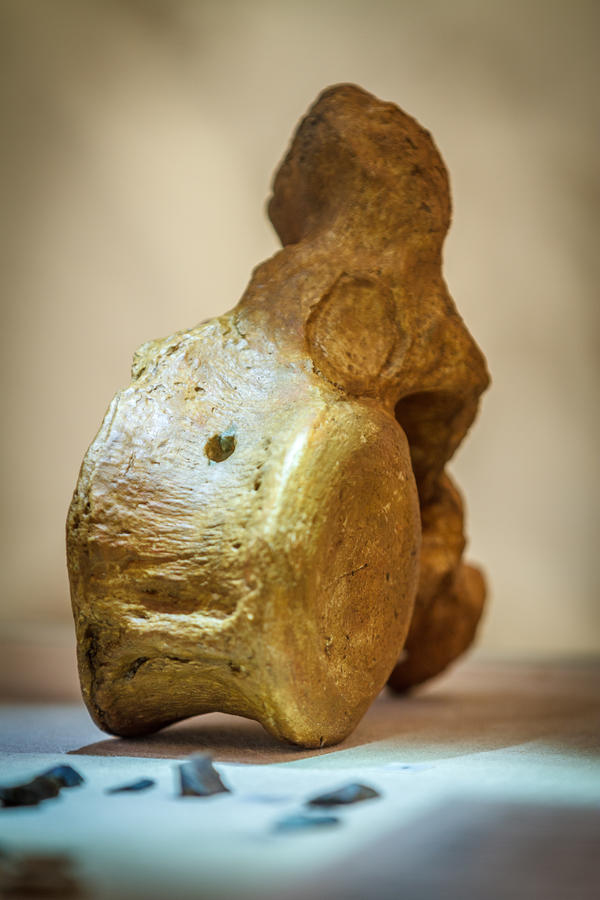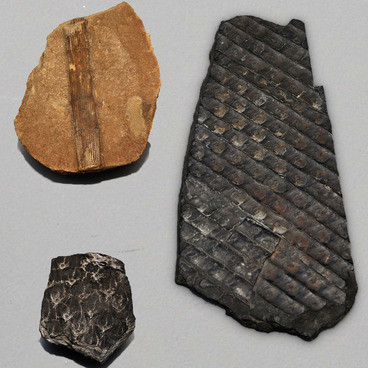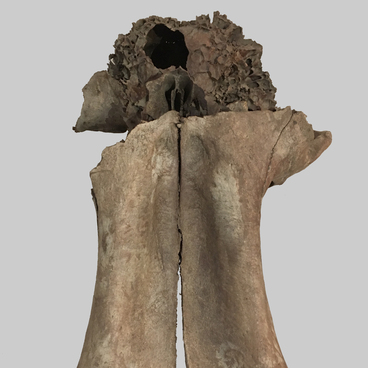Lugovskoye is a unique paleontological and archaeological site in the Ob River valley, 36 kilometers west of Khanty-Mansiysk. This is one of the northernmost human sites of the ancient Stone Age in West Siberia. About 3,000 tools, and waste products from the stone industry, have been found here. Thousands of years ago people were attracted to these kinds of places by unique natural conditions: there were wild salt licks and natural traps due to the unsteady rocks.
Animal salt licks - mineral rocks with high salinity - were a kind of delicacy for wild animals, and a means of replenishing their supply of minerals. Among those who visited the ones in Lugovskoye were woolly rhinoceroses, reindeer, elk, bison, musk oxen, and prehistoric horses. But mammoths came here in the most numerous groups. More than 6,500 bone fragments from these extinct animals have been found here. They belong to 27 mammoths: adult males, females, and babies.
Shaky clay soils became traps for the massive mammoths: they got stuck and died of hunger, or fell prey to predators, such as wolves or brown bears. Prehistoric humans also took advantage of the situation, and finished off the mammoths using primitive tools.
In 2002, researchers expanded the paleontological collection with a unique find made at the Lugovskoye site — a mammoth thoracic vertebra with quartzite inserts from a thrown weapon that became stuck. It was the 7th-9th thoracic vertebra, and it was located above the area with the heart and lungs. The ancient weapon left a hole 23.5 millimeters deep and 11 millimeters wide in the bone. According to various assessments, this weapon could be a spear or a spearthrower, and the attack took place at a distance of 5 to 8 meters from the animal. The strike was painful, but not fatal: with this kind of wound, the mammoth could still move.
The age of the find - roughly 14,200 years B.C. - was determined using the radiocarbon dating method. Around that time, prehistoric humans already knew how to make improvements to their weapons. For example, sharpened pieces of stones were inserted into the tips of arrows and spears. Scientists found a sample of this kind of dual-slot tip at the Chernozerye II site in Omsk Region.
Animal salt licks - mineral rocks with high salinity - were a kind of delicacy for wild animals, and a means of replenishing their supply of minerals. Among those who visited the ones in Lugovskoye were woolly rhinoceroses, reindeer, elk, bison, musk oxen, and prehistoric horses. But mammoths came here in the most numerous groups. More than 6,500 bone fragments from these extinct animals have been found here. They belong to 27 mammoths: adult males, females, and babies.
Shaky clay soils became traps for the massive mammoths: they got stuck and died of hunger, or fell prey to predators, such as wolves or brown bears. Prehistoric humans also took advantage of the situation, and finished off the mammoths using primitive tools.
In 2002, researchers expanded the paleontological collection with a unique find made at the Lugovskoye site — a mammoth thoracic vertebra with quartzite inserts from a thrown weapon that became stuck. It was the 7th-9th thoracic vertebra, and it was located above the area with the heart and lungs. The ancient weapon left a hole 23.5 millimeters deep and 11 millimeters wide in the bone. According to various assessments, this weapon could be a spear or a spearthrower, and the attack took place at a distance of 5 to 8 meters from the animal. The strike was painful, but not fatal: with this kind of wound, the mammoth could still move.
The age of the find - roughly 14,200 years B.C. - was determined using the radiocarbon dating method. Around that time, prehistoric humans already knew how to make improvements to their weapons. For example, sharpened pieces of stones were inserted into the tips of arrows and spears. Scientists found a sample of this kind of dual-slot tip at the Chernozerye II site in Omsk Region.

